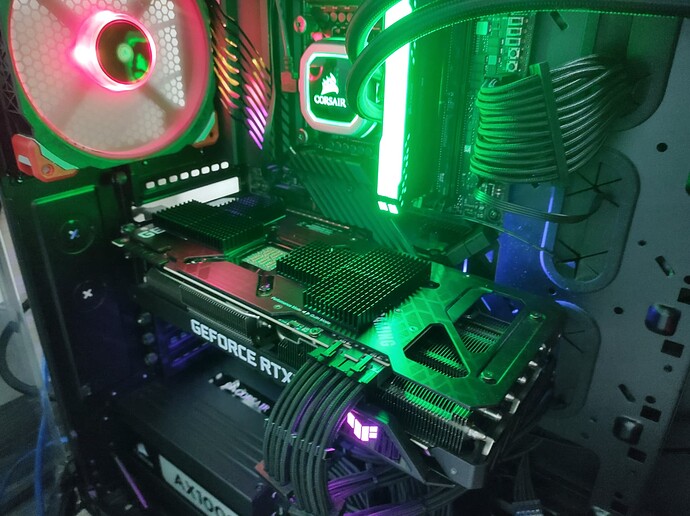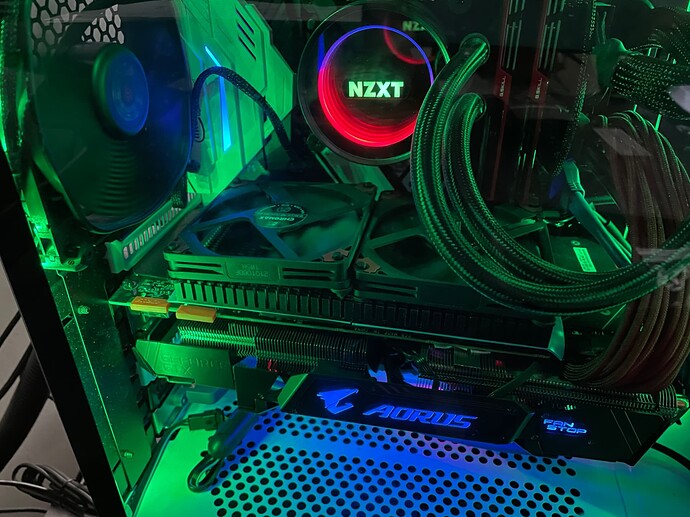same driver I think. not at home at the moment, but it jsut updated the other day.
maybe it depends on which gpu or which series?
mine is a gigabyte 3080ti gaming OC 12gb.
I do see the explanations if i hover the mouse over, but only 2 options are actually listed.
It’s all a bit strange though. As i said, no matter what I do in afterburner, it doesn’t improve anything in games/tests. When I undervolt, I can see that the voltage then never goes above what I set, but it also always dips below it. e.g. if i set an undervolt of 2025mhz @ 1.00V…it’ll never go above 1V, but it dips down and fluctuates between 1.0V, 987mv, 950mv, 918mv, 887mv, 818mv, etc…if i then set an undervolt even as low as say 1845mhz @ 800mv (probably unstable, but jsut an example), you’d expect it to basically stick at 800mV and 1845mhz all the time, as it’s less voltage than it had ever tried to pull previously…yet instead, it will never go above 800mv, but will dip down to 787mv, 750mv, 717mv etc…I’m just pulling these numbers out of thin air for an example, but the point is that the unvervolt IS taking some affect, in that it’s limiting voltages and clock speeds…but it’s also having basically ZERO effect on boost behaviour, i.e. it still downclocks in the same places, as if it was pushing much higher volatages already.
the other strange thing is that temperatures are not affected at all in ANY of my undervolts. card sits between 28 and 32 C at idle, and goes up to between 55 and 65 under full load, usually hitting no more than 60. This does not change whether im stock or whether im limited down to sub 800mv, wheras previously, undervolting was the only way i could keep my old card at reasonable temperatures.
Now, the only thing I haven’t tried (and I can’t since I don’t have the old card anymore, it’s in my friends PC) is seeing how the undervolt behaves with my OLD card AND my OLD PC, but with new drivers and afterburner software. (along with my new card i also built a whole new PC, i712700k, 16gb DDR5). His PC is similar specs to my old PC though.
gigabyte do have their own overclocking software, which i quickly tested and gave the card a 100mhz boost…it then did reach a higher clock speed of max 2100mhz, and temps did increase slightly (i think gpu temp went up to 70, mem and hot spot upto like 75 i think it was)…which is also strange because in afterburner, the MOST i can manually boost to without it almost instantly crashing is 2040mhz. i’m not really interested in overclocking as such though, so i’ve reset this back to default again, as i don’t think it’s worth the increase in temps (even though they’re still well within safe limits).
really can’t work out why neither me nor my friend can achieve a steady/stable undervolt though.
I also used the wayback machine to download an OLD version of afterburner, thinking that might be the problem, but even then it behaves exactly the same. which makes me think it must be the nvidia driver right?
except, there’s plenty of people using the latest driver and still undervolting without problem…if it wasn’t for my old card behaving the same way in another machine, i’d have put it down to the gigabyte card having maybe some kind of restriction in the way boost behaviour works or soemthing…but even then, why should the max voltage and clock speed be applied? You’d have thought either it would work as intended, or not at all?
all very strange. i think i’ve given up on the idea of undervolting now though. stock works fine, tmeps are great…it’s only that niggling feeling that i could be saving power/prolonging the lifespan of the card, and possibly even getting better performance because of a more consistently high clock speed…
now, the only other thing I tried which gave me somewhat better results was, instead of lowering the curve at the start, i raised the whole curve, lets say by 100Mhz, then jsut lowered everything above my desired frequency by 200mhz…it’s very similar to the normal undervolt process, except instead of everything below your desired point being either at +0 or -200 or whatever…it’s all +100. This did mean higher average clock speeds…but obviously it’s much much harder to find stability, because some points on the curve you mgiht be able to set +100 easily, but others you might only be able to raise by +15 before it crashes.
If i had the time (which you might assume i must have, given the length nof this post), I think I could get great results by boosting at 1.00 to the max I can with it still being stable, testing testing teting for hours…then go down to the next lowest voltage point (can’t remember, is it like 987mv?) do the same…hours of testing…do that all the way down to say 750mv to find the highest frequency that will work at each voltage point and I’d probably be gettign best performance possible and still limiting max voltage like in undervolting…but the problem with doing that is that it’s probably not worth it because i’m not gaining anything temperature wise anyway, and you’d probably have to repeat the whole process every time theres a new driver released.


